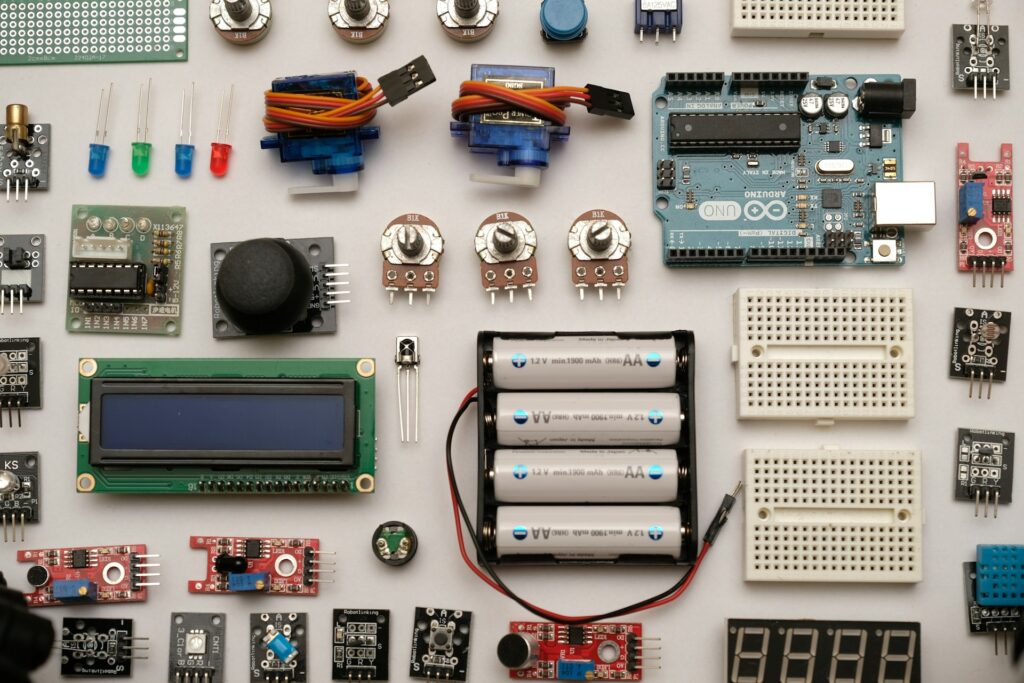Introduction:In today’s interconnected world, the Internet of Things (IoT) stands at the forefront of technological innovation, reshaping how devices communicate and interact. From smart homes to industrial automation, IoT technology is driving efficiency, convenience, and productivity across various sectors. This article explores the multifaceted landscape of IoT, delving into its applications, challenges, and future prospects.
Understanding the Internet of Things
Defining IoT
The Internet of Things refers to the network of interconnected devices embedded with sensors, software, and other technologies, enabling them to collect and exchange data. These devices range from everyday objects like smartphones and wearables to industrial machinery and autonomous vehicles.
Components of IoT
IoT ecosystems comprise several key components, including sensors, actuators, connectivity modules, and cloud platforms. Sensors gather data from the environment, while actuators enable devices to respond to commands. Connectivity modules facilitate communication between devices, and cloud platforms process and analyze data to derive meaningful insights.
Impact of IoT
Enhancing Efficiency
IoT technology streamlines processes and optimizes resource utilization, leading to increased efficiency across industries. In manufacturing, for instance, IoT-enabled sensors monitor equipment performance in real-time, enabling predictive maintenance and minimizing downtime.
Enabling Smart Cities
IoT plays a pivotal role in the development of smart cities, where interconnected infrastructure enhances urban living. From smart traffic management to waste management systems, IoT solutions improve sustainability, safety, and quality of life in urban environments.
Applications of IoT
Healthcare
In healthcare, IoT devices monitor patient vitals, track medication adherence, and facilitate remote patient monitoring. Wearable fitness trackers, for example, enable individuals to monitor their health metrics and track fitness goals in real-time.
Agriculture
IoT technology revolutionizes agriculture through precision farming techniques. Soil sensors, drones, and autonomous machinery optimize crop management practices, leading to increased yields and reduced environmental impact.
Challenges and Considerations
Security and Privacy
As IoT devices proliferate, concerns regarding data security and privacy become paramount. Ensuring robust encryption protocols and implementing stringent access controls are essential to safeguarding sensitive information.
Interoperability
The diverse array of IoT devices and protocols poses challenges for interoperability and integration. Standardization efforts aim to streamline communication between disparate devices and platforms, fostering interoperability and compatibility.
Future Trends
Edge Computing
Edge computing, which involves processing data closer to its source, is poised to reshape IoT architectures. By reducing latency and bandwidth requirements, edge computing enhances real-time decision-making and enables faster response times.
AI Integration
The integration of artificial intelligence (AI) with IoT systems enables predictive analytics and autonomous decision-making. Machine learning algorithms analyze vast datasets to extract actionable insights, driving innovation and efficiency.
FAQs
How does IoT impact privacy? IoT devices collect vast amounts of data, raising concerns about privacy and data security. Implementing robust encryption protocols and user consent mechanisms is crucial to safeguarding personal information.
What are the security risks associated with IoT? IoT devices are vulnerable to cyberattacks, posing risks such as data breaches and system manipulation. Employing cybersecurity best practices, such as regular software updates and network segmentation, mitigates these risks.
Can IoT devices be hacked? Yes, IoT devices are susceptible to hacking if not adequately secured. Weak passwords, unpatched vulnerabilities, and insecure communication protocols provide avenues for unauthorized access and exploitation.
What role does IoT play in sustainable development? IoT technologies enable efficient resource management and environmental monitoring, contributing to sustainable development goals. From smart energy grids to waste management systems, IoT solutions promote sustainability and conservation efforts.
How is IoT transforming industries? IoT drives digital transformation across various industries by optimizing processes, enhancing operational efficiency, and enabling data-driven decision-making. From manufacturing and healthcare to agriculture and transportation, IoT technologies revolutionize business operations.
What are the challenges of IoT implementation? Challenges of IoT implementation include interoperability issues, security concerns, scalability limitations, and regulatory compliance complexities. Overcoming these challenges requires strategic planning, collaboration, and investment in robust infrastructure.
Conclusion
The Internet of Things represents a paradigm shift in connectivity, empowering organizations and individuals to harness the power of data-driven insights and automation. As IoT technology continues to evolve, its impact will extend to every facet of our lives, driving innovation, efficiency, and sustainability.

